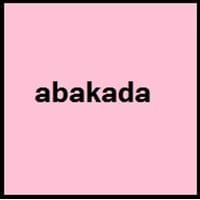Galician vs Tagalog
Countries
Galicia
Philippines
National Language
Galicia
Philippines
Second Language
Not spoken in any of the countries
Filipinos
Speaking Continents
Europe
Asia, Australia
Minority Language
Not spoken in any of the countries
Australia, Canada, Guam, Hong Kong, New Zealand, Singapore, United Kingdom
Regulated By
Royal Galician Academy (Real Academia Galega)
Komisyon sa Wikang Filipino, National Languages Committee
Interesting Facts
- In Galician language, there are no compound tenses.
- The earliest document in Galician language was written in 1228 which was legal charter for a municipality of Galicia.
- In 1593, "Doctrina Christiana" was first book written in two versions of Tagalog.
- The name "Tagalog" means "native to" and "river". "Tagalog"is derived from taga ilog, which means "inhabitants of the river".
Similar To
Portuguese Language
Filipino, Cebuano and Spanish Languages
Derived From
Latin
Not Available
Alphabets in
Galician-Alphabets.jpg#200
Tagalog-Alphabets.jpg#200
Writing Direction
Left-To-Right, Horizontal
Left-To-Right, Horizontal
Language Levels
Not Available
Time Taken to Learn
Not Available
Thank You
Grazas
Salamat po
How Are You?
Que tal estás?
Kamusta ka na?
Good Night
Boas noites
Magandang gabi
Good Evening
Boa tarde
Magandang gabi po
Good Afternoon
Boa tarde
Magandang hapon po
Good Morning
Bos días
Magandang umaga po
Please
Por favor
pakiusap
Sorry
Síntoo!
pinagsisisihan
I Love You
Ámote
Iniibig kita
Excuse Me
Perdoe!
Ipagpaumanhin ninyo ako
Dialect 1
Eastern Galician
Batangas Tagalog
Where They Speak
East Galicia
Batangas, Gabon
Dialect 2
Central Galician
Bisalog
Where They Speak
Central Galicia
Philippines
Dialect 3
Western Galician
Filipino
Where They Speak
West Galicia
Philippines
How Many People Speak
Not Available
Speaking Population
Not Available
Second Language Speakers
Not Available
Native Name
Galego
Tagalog
Alternative Names
Galego, Gallego
Filipino, Pilipino
French Name
galicien
tagalog
German Name
Galicisch
Tagalog
Pronunciation
[ɡaˈleɣo]
[tɐˈɡaːloɡ]
Ethnicity
Not Available
Tagalog people
Language Family
Indo-European Family
Austronesian Family
Subgroup
Not Available
Indonesian
Branch
Not Available
Not Available
Early Forms
Medieval Galician
Proto-Philippine, Old Tagalog, Classical Tagalog, Tagalog
Standard Forms
Galician
Filipino
Language Position
Not Available
Signed Forms
Not Available
Not Available
Scope
Individual
Individual
ISO 639 6
Not Available
Not Available
Glottocode
gali1258
taga1269
Linguasphere
51-AAA-ab
31-CKA
Language Type
Living
Living
Language Linguistic Typology
Not Available
Object-Verb-Subject, Subject-Verb-Object, Verb-Object-Subject, Verb-Subject-Object
Language Morphological Typology
Not Available
Not Available
Galician and Tagalog Language History
Comparison of Galician vs Tagalog language history gives us differences between origin of Galician and Tagalog language. History of Galician language states that this language originated in c. 1175 whereas history of Tagalog language states that this language originated in 1593. Family of the language also forms a part of history of that language. More on language families of these languages can be found out on Galician and Tagalog Language History.
Galician and Tagalog Greetings
People around the world use different languages to interact with each other. Even if we cannot communicate fluently in any language, it will always be beneficial to know about some of the common greetings or phrases from that language. This is where Galician and Tagalog greetings helps you to understand basic phrases in Galician and Tagalog language. Galician word for "Hello" is Ola or Tagalog word for "Thank You" is Salamat po. Find more of such common Galician Greetings and Tagalog Greetings. These greetings will help you to be more confident when conversing with natives that speak these languages.
Galician vs Tagalog Difficulty
The Galician vs Tagalog difficulty level basically depends on the number of Galician Alphabets and Tagalog Alphabets. Also the number of vowels and consonants in the language plays an important role in deciding the difficulty level of that language. The important points to be considered when we compare Galician and Tagalog are the origin, speaking countries, language family, different greetings, speaking population of these languages. Want to know in Galician and Tagalog, which language is harder to learn? Time required to learn Galician is Not Available while to learn Tagalog time required is 44 weeks.





